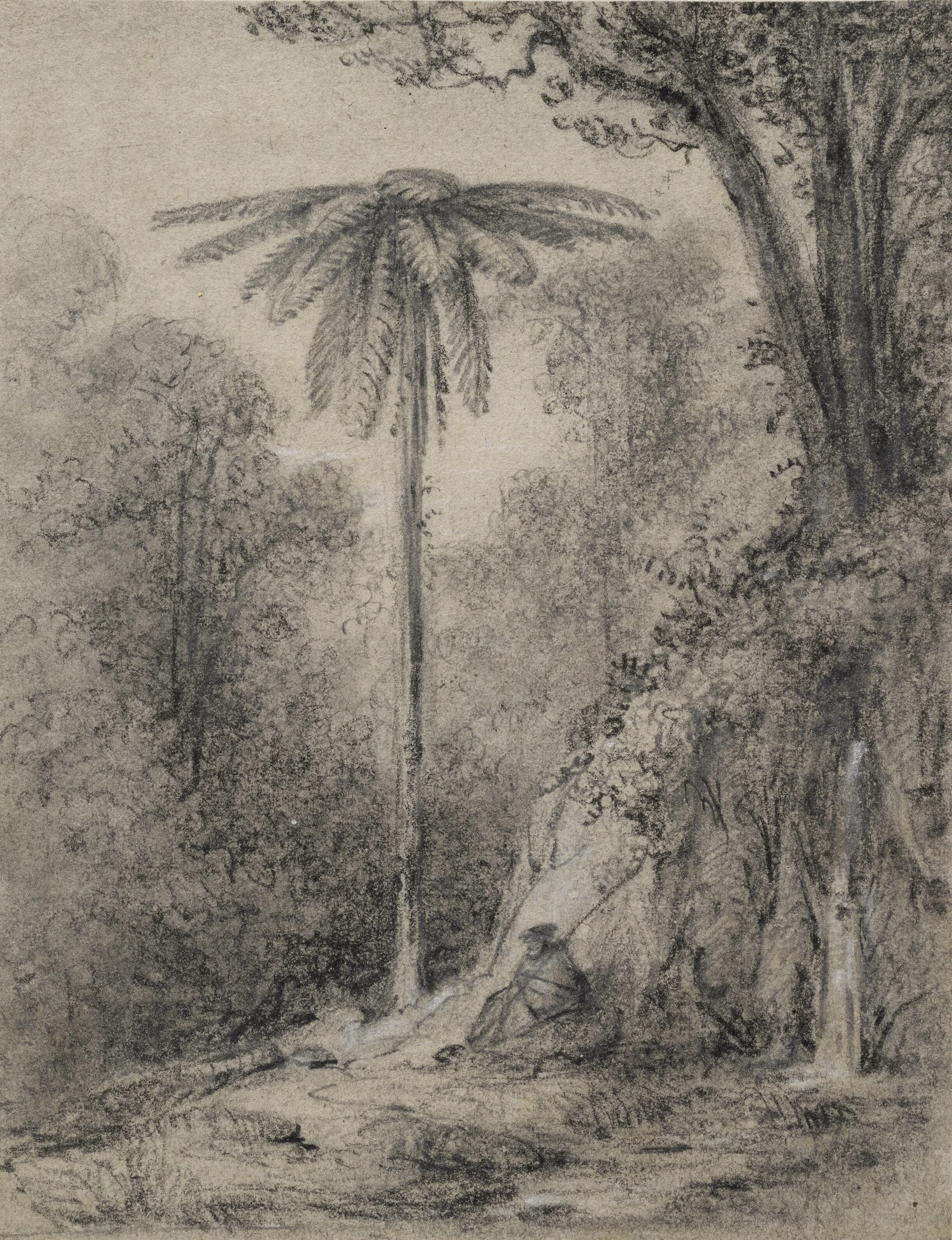William Swainson, (1789-1855), A view of the Soft leaved fern and Hutt Forest, New Zealand
William Swainson, (1789-1855), A view of the Soft leaved fern and Hutt Forest, New Zealand
Pencil on paper, mounted
15.5 cm. by 12.3 cm.
Circa 1840s
Inscribed on mount ‘The Soft leaved Tree Fern & Hutt Forest (Cyathia Mollis [sic])’
The paper is a section of a page from a natural history publication with a section of printed text on the reverse. The original mount card watermarked ‘E & P 1805’ referring to Edmeads and Pine.
William Swainson was a renowned English ornithologist, malacologist, conchologist, entomologist and artist. He published and illustrated numerous publications on the subject of natural history and was elected a fellow of the Royal Society in 1820 on his return from an expedition to Brazil. His reputation in Britain was tarnished following his support for the Quinarian system of biological classification, a system proposed by William Sharp Macleay in 1819 but which, despite the support of proponents such as Swainson, quickly fell out of favour. As a result, Swainson decided to retire from scholarly work and emigrate with most of his family to New Zealand. He bought a plot of land in the Hutt valleys south of Wellington. But his life-long love of natural history remained unabated and in his sketches in and around his estate it is clear that the sight of a fine natural history specimen, often tree ferns, inspired a beautiful and accurate depiction of the scene.
Following disputes over land ownership with local Maoris, Swainson left for Sydney in 1851 and embarked on further natural history studies before returning to New Zealand a couple of years later where he died in the Hutt Valley in 1854.
Many related examples of Swainson’s sketches from this period and earlier, along with much of his correspondence, are in the National Library of New Zealand.
The inscription on the mount is in the artist’s own hand. His attribution of genus and spelling is mistaken In modern classifications. The tree depicted is a form of Cyathea, possibly medullaris.

